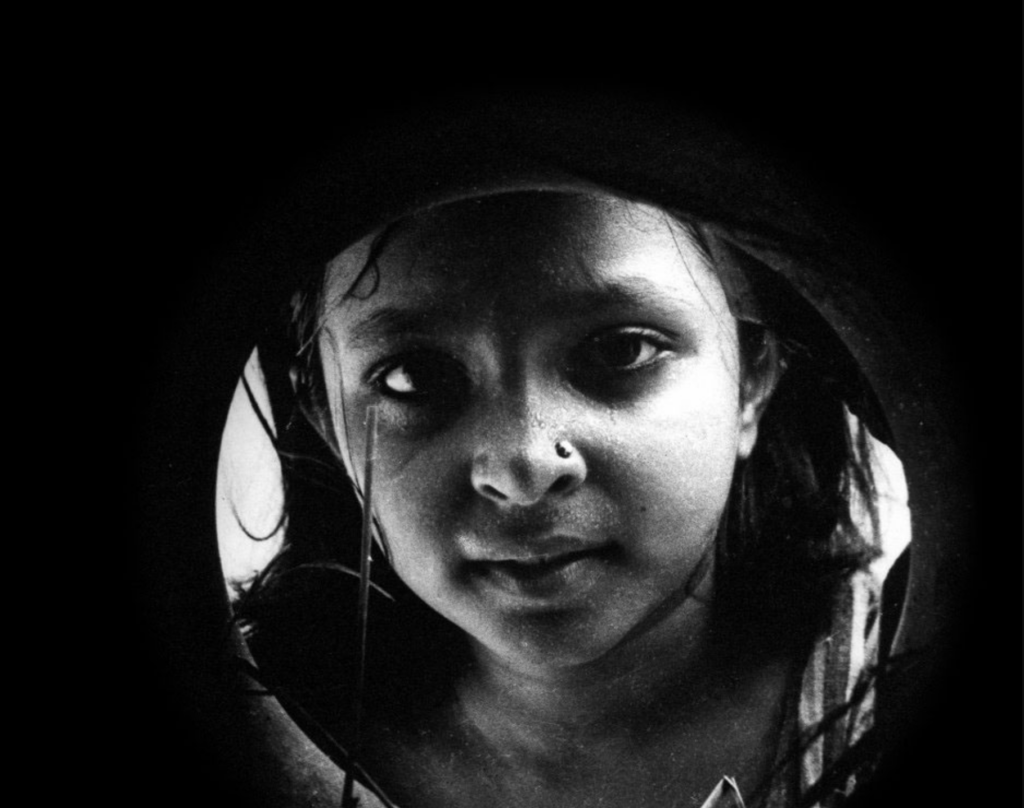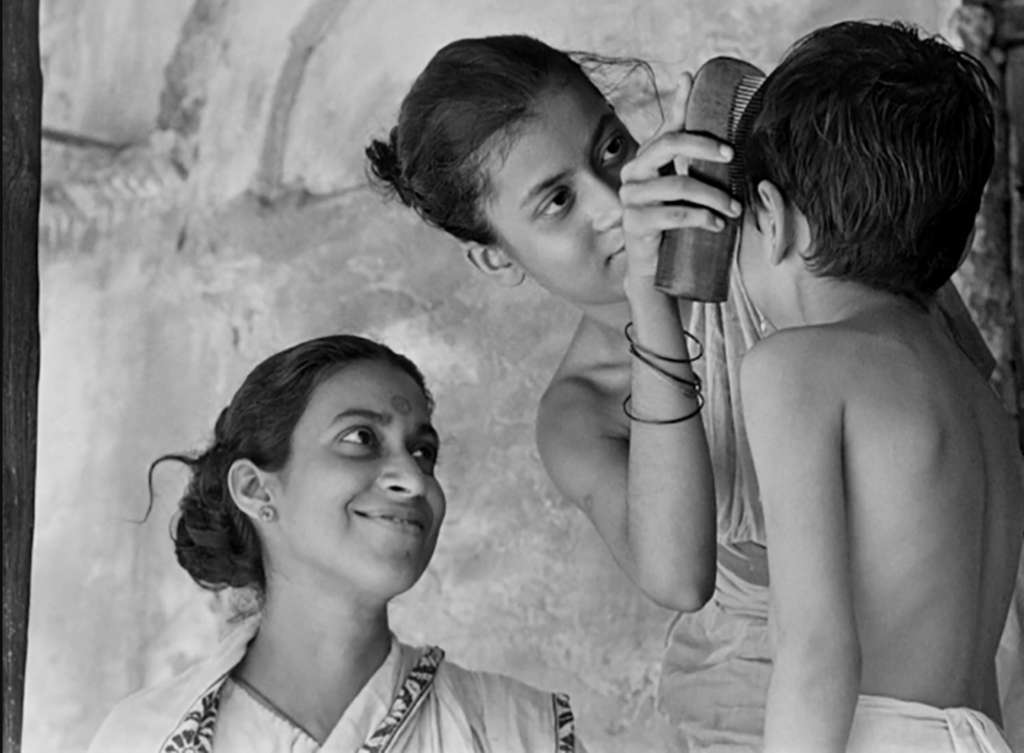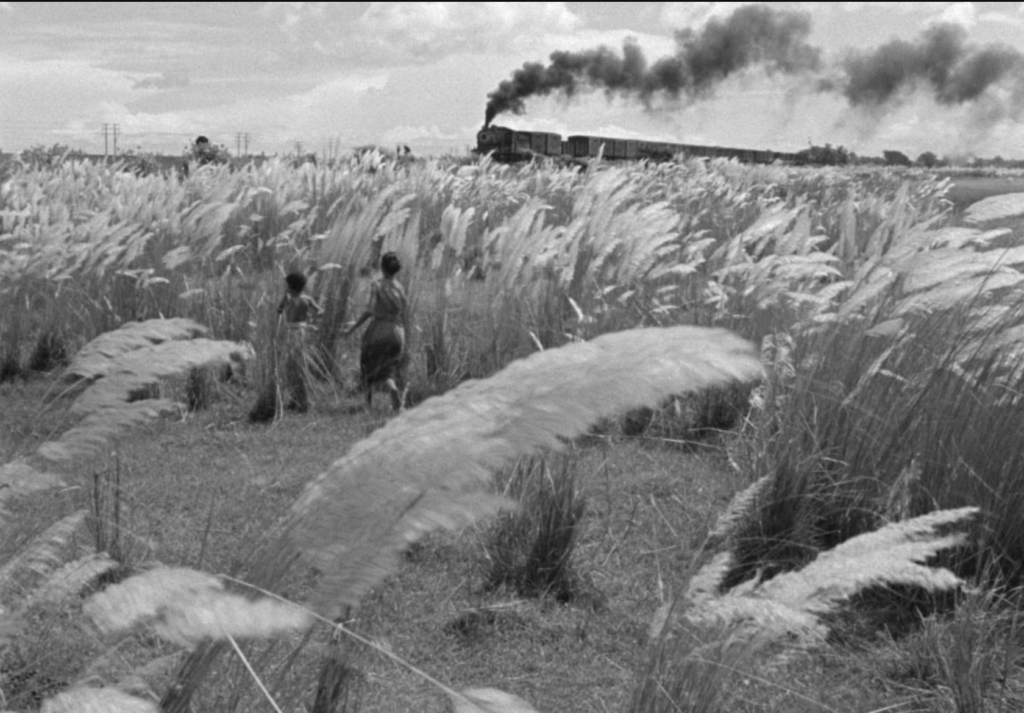Three years after independence from 200 years of British rule, a debutant film-maker who came of age in colonial India started making a film in Bengali about a village in Bengal. Satyajit Ray worked almost entirely in Bengali, building a bridge “between his beloved Bengal and the rest of the world”

In the 12 years that it took photographer Chirodeep Chaudhuri to complete his book A Village In Bengal, about his ancestral hamlet Amadpur, it was Satyajit Ray who helped him find his way when he realised that the images he had taken amounted only to pretty pictures. His friends said his work reminded them of Pather Panchali but Chaudhuri himself was dissatisfied. There was no narrative. Then, one afternoon in Kolkata, he found a CD of the film and watched it again and again over the next few months, with a slow harvest of understanding.
“The truth of Ray’s comment, with regard to Pather Panchali, that ‘life in a poor Indian village does ramble’ was something that I too was noticing,” Chaudhuri wrote in A Village In Bengal. “…my reading about Ray, and the repeated viewing of his films, led me to understand, admittedly in only a small way, the Bengali way of life.” A Bengali in Mumbai, Chaudhuri is twice removed from Bengal—by physical geography and the cultural distance of not being able to read Bangla. But you wouldn’t know this when you see the work. A Village In Bengal offers a startlingly intimate portrait of a village community, the images suffused with the same quality of incandescence that the critic Chidananda Dasgupta noted about the Apu trilogy, images lit by a beauty that appears detached from real life. No photograph in Chaudhuri’s book has a caption. It’s a gamble that works beautifully because we know, by intuition or the umbilical cord that is Pather Panchali, what is happening in each photograph.
“I don’t want to see a movie of peasants eating with their hands,” filmmaker François Truffaut is believed to have said, walking out of a screening. But Ray clearly was not anxious about such responses. More than anything, this is what strikes me: how poised he was as a young artist, how certain of his identity. Through his career of 40 years and 36 films, he made 30 films entirely in Bengali and two documentaries partly in Bengali. Despite the more lucrative Hindi film industry, he made only two films in Hindi
I know the hold of this umbilical cord. Half a decade ago, when I was younger and far less certain of myself, I travelled to a village in Purulia, West Bengal, to visit the home of a reluctant interviewee. The subject bailed on me on the eve of the trip but gave me permission to visit her family home. Who travels several hours from Kolkata to visit the home of a person who doesn’t want to meet her? Why would the family even speak with me? Embarrassment comes so easily when we are young.
The highway is like any other in the country, miles of grey road with swaying trucks and hoardings of “national” brands of cement and real estate on the sides. When we neared the village and turned in from the highway, I felt the pull of something familiar. There, on both sides of the narrower road, were slender white wispy flowers standing upright on the ground. The kaash flowers so distinctive of the landscape of Bengal—I had always lived in cities, yet how many times must I have seen them on screen? How many film-makers had used them to signal that their story was set in Bengal? It is among these slender white flowers that Durga and Apu, the adolescent sister and her young brother, are waiting when the train steams in, releasing clouds of black smoke into the countryside; a sequence held to be among the most iconic in world cinema.
I know this place, I thought. Even if from a screen, I know this place. I know its language, its plentiful ponds, its hot sun and swiftly falling evenings. The knot in my stomach loosened. I could do this. And I managed.

Pather Panchali, released in 1955, was five years in the making. Three years after independence from 200 years of British rule, a debutant film-maker who came of age in colonial India started making a film in Bengali about a village in Bengal. “I don’t want to see a movie of peasants eating with their hands,” film-maker François Truffaut is believed to have said, walking out of a film screening. But Ray clearly was not anxious about such responses. More than anything, this is what strikes me the most: how poised Ray was as a young artist, how certain of his identity. Through his career of 40 years and 36 films, he made 30 films entirely in Bengali and two documentaries partly in Bengali. Despite the more lucrative Hindi film industry, he made only two films in Hindi.
This is what Ray has bequeathed us, and I write this as a Bengali—a map to our place in the world, an atlas of the habits and rhythms and anxieties and aspirations of Bengaliness. “The modern educated Indian needs to find the umbilical cord linking him with his own tradition and with the common man and thus save himself from being a refugee,” wrote the critic Chidananda Dasgupta in The Cinema Of Satyajit Ray.
Ray’s cinema is known for humanism. He was not a Marxist, like his contemporaries Ritwik Ghatak and Mrinal Sen were. He believed the potential of the individual is supreme, and no state or system could subsume that. Yet the specificity of his location did not diminish his humanism. “He built this bridge between his beloved Bengal and the rest of the world,” actor Sharmila Tagore, who appeared in five Ray films, said in a documentary on Apur Sansar.
To locate the world in a grain of sand is said to be the hallmark of great art. But it is mainly English and American and occasionally French and Italian grains in which the world is held up to us. Ray located the world in a grain of Bengal. He gifted us the awareness that our lives and feelings and adventures matter. That we need not measure ourselves in Anglophone and Euro-centric experiences. That we have our own stories and geographies and histories. And they matter. We matter.

This essay was first published in Mint Lounge in a special edition to mark Ray’s centenary titled: One Hundred Reasons to Love Ray
My book The Day I Became a Runner offers an ambitious alternate history of independent India through the lives of nine women runners. It is available on Amazon and bookstores across India
1 comment for “Seeing the World in A Grain of Bengal”